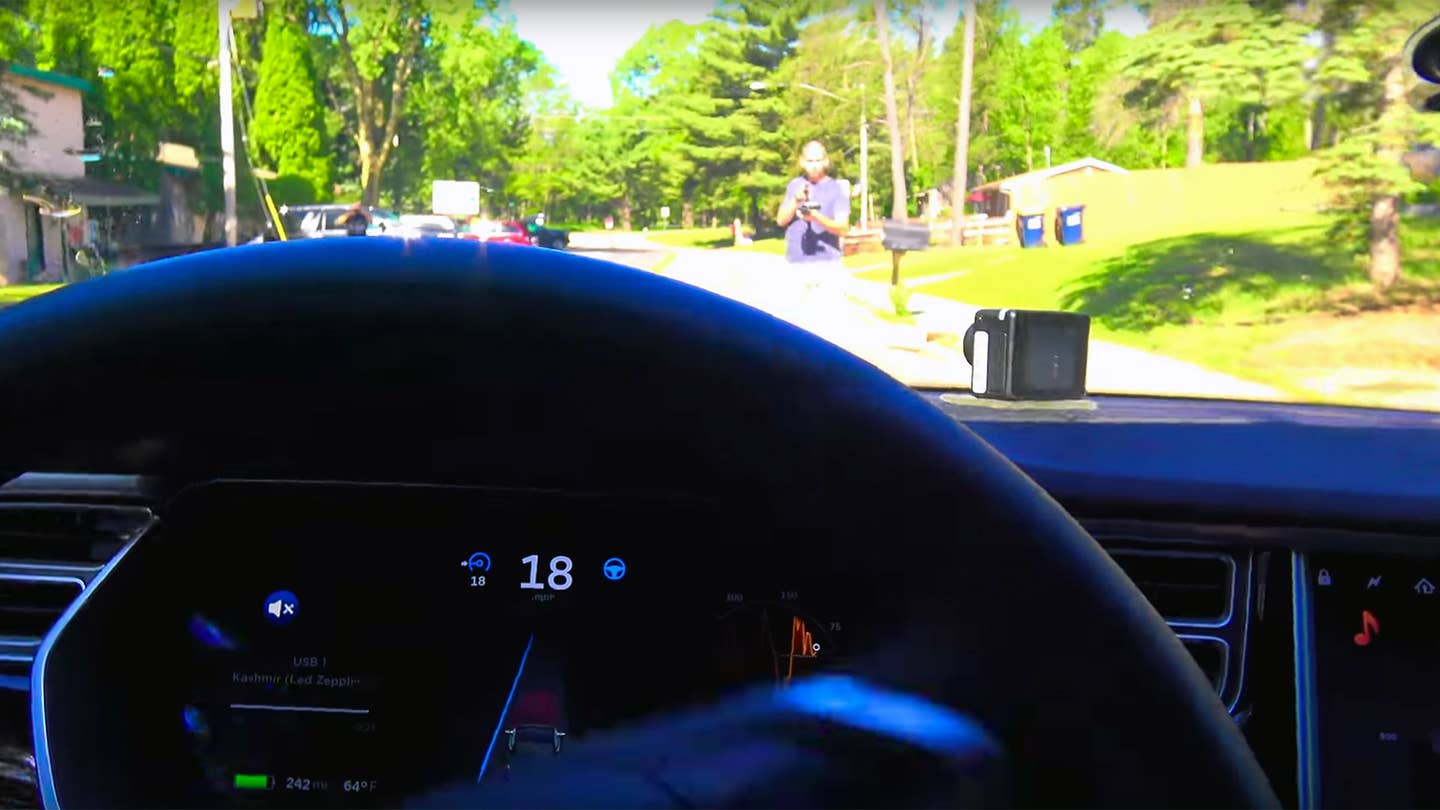Tesla’s Autopilot Seemingly Does Nothing to Avoid Hitting This Pedestrian
Video shows the car can detect people in its path—but doesn’t stop to save them.

In case you needed another reason to avoid taking an Autopilot Nap behind the wheel of your new Tesla, here's a big one: If a person steps into the road in front of your, your car won't stop itself from running over said pedestrian like a boulder over Wile E. Coyote. The car knows that person is there, mind you. It's just not going to stop.
That's the takeaway from a recent experiment by a Model S owner who goes by the YouTube handle "KmanAuto." (Kman, presumably, is also the "Assman".) To test out his Tesla's ability to detect any errant humans who charge into his car's path, Kman asked a friend of his to stand in front of the car while running the car through its suite of semi-autonomous driving features.
As the video below shows, things starts out fairly well for the Tesla (and the man it was headed towards). The Summon feature, which enables users to drive the car back and forward at low speeds via remote control, both detected the pedestrian and took appropriate moves to keep from hitting him.
But once Kman switched over to testing out the Tesla's higher-speed self-driving features, things quickly went pear-shaped. Both the traffic-aware cruise control, which only regulates speed, and the more complex Autopilot that controls both velocity and steering failed to automatically brake as the car closed in on Kman's pal.
Now, the Tesla clearly sees the humanoid obstacle in this scenario. The Forward Collision Warning system works like a charm, going full-blown "DANGER WILL ROBINSON" at the sight of a man in the car's path. But much like similar obnoxious systems in many new cars, that system is designed to be a passive system that merely alerts the driver to an incipient impact. Autopilot, on the other hand, is specifically designed to avoid obstacles, as that now-famous video of an Ohio man's Tesla saving him from a merging truck demonstrated so well. Yet only Kman's last-minute manual override seems to keep the car from hitting his pal.
It's possible that Kman simply flinched too early, of course. But given how close he lets the Tesla come to his friend before swerving out of the way, it seems hard to believe the Model S could have consistently avoided hitting a pedestrian under the circumstances, even in a full panic stop.
Update: June 28, 2016: A Tesla spokesperson issued the following statement to The Drive in response to a request for comment:
"Safety is a top priority at Tesla, and anyone attempting to purposefully strike another person or object with their Tesla is misusing the vehicle. It is paramount that our customers exercise safe behavior when using our vehicles, including remaining alert and ready to resume control at all times when using the car’s autonomous features, and braking to avoid a collision."
"Model S and Model X are equipped with Automatic Emergency Braking (AEB), which is designed to engage the brakes at the last possible moment to avoid or mitigate a collision. AEB does not engage when an alternative collision avoidance strategy (e.g., driver steering) remains viable. Instead, when a collision threat is detected, forward collision warning alerts the driver to encourage them to take appropriate evasive action. AEB is a fallback safety feature that operates by design only at high levels of severity and should not be tested with live subjects."

